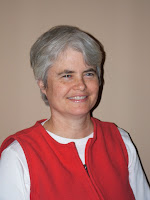A couple weeks ago I was working with “Patrick,” a man who for months had been waking up with back pain. He had pain intermittently during the day, but consistently in the morning.
I asked him to show me how he slept. He lay down on my table on his stomach and turned his head this way and arranged his legs like this and his arms like that. All fine. But as I looked more closely, I could see that there were odd things about his ribs. They weren’t going the way one would expect them to.
So, I sat next to him and gently pushed on each rib, a little this way and a little that. I wasn’t trying to put them “in the right place” but to clarify possibilities to his brain. Through movement I was saying, “Dear Brain. You can hold the rib here, or you can shift it there, or there, or there.”
Patrick was taking some big breaths, so I had the feeling that I was going in the right direction. Over time the ribs as a whole were softening, and he looked more comfortable in his sleeping position.
Then it came time to sit. He sat quietly for a moment; he looked nice and easily upright. Then he made the transition to stand, and as he did, he said with surprise, “This feels a great deal lighter than I usually feel.” At my suggestion, he went back and forth between sitting and standing a few times, and the feeling of lightness continued. Then he walked around my room, and felt the lightness also in walking.
He turned to me and, “How did that happen?”
So I told Patrick a story.
About 15 years ago, when I had been a Practitioner for a few years, I went to my annual week of continuing education. In the opening session the trainer, Jeff Haller, asked the group, “What is the purpose of the skeleton?”
Jeff was sitting on one of our low tables while about 20 of us were sitting around him on stools and on the floor. There was a long silence as we reflected. One answer was offered. It was a beginning. Another few offerings were made, but none seemed to hit the mark. Silence returned to the room.
Jeff answered his own question: the purpose of the skeleton is to make the body light.
If you think about an amoeba, he continued, it only moves by projecting a pseudopod against a squishy mass. It can never get very big, and it cannot live outside water. To get bigger and still be able to move, fish developed with vertebrae and muscles to pull against them. To move across land, amphibians developed limbs. And to get the head at maximum height to the ground, apes and humans developed the ability to walk on two legs.
In the process of being human, things happen that lead to a loss of the natural alignment. Then the weight of the body, and particularly the weight of the head, is no longer carried directly over the bones. In consequence, the muscles have to do extra work.
When the alignment is restored, weight is taken off the muscles, and the person feels, in every action, lighter.
Subscribe to:
Post Comments (Atom)



No comments:
Post a Comment